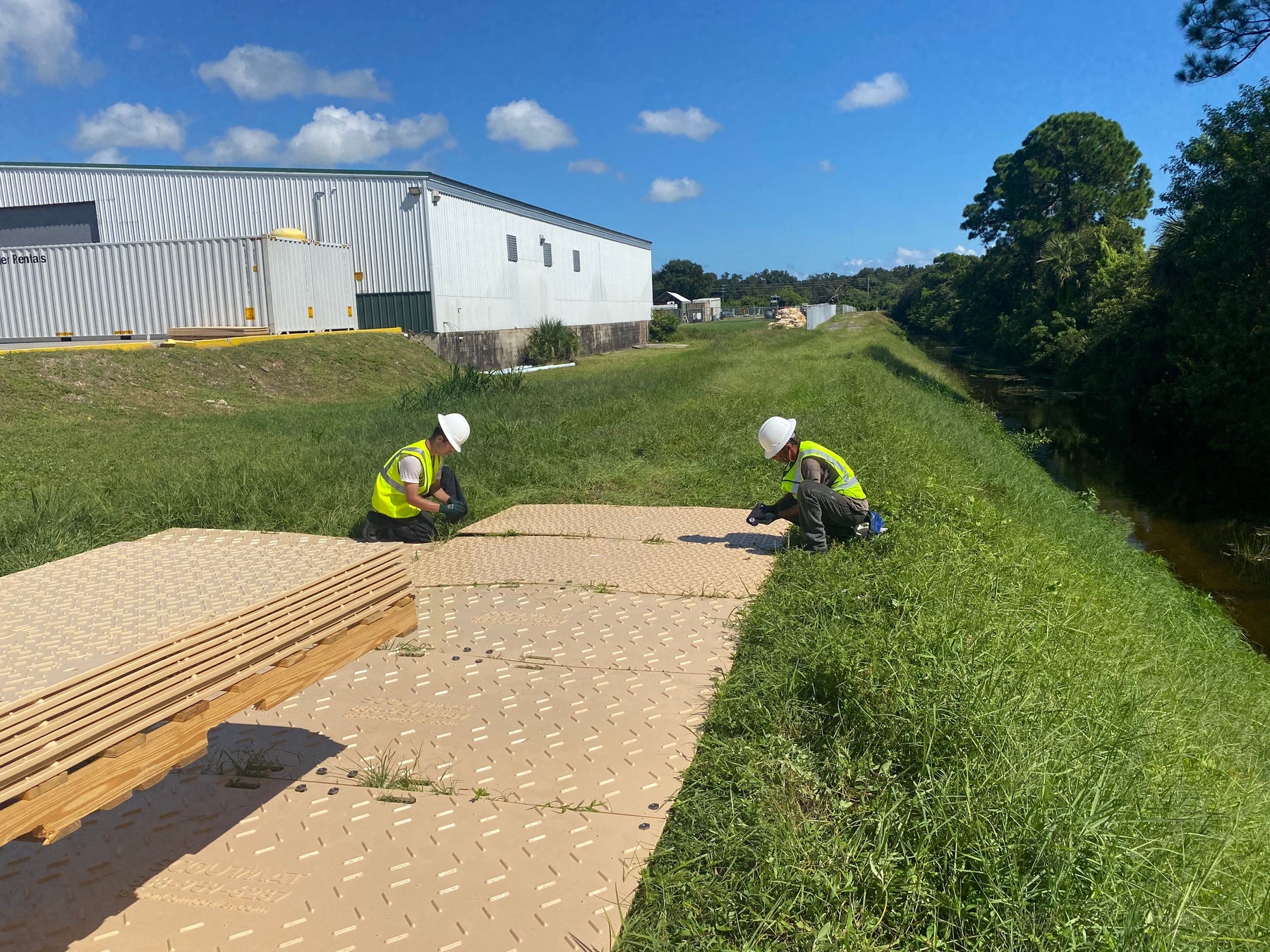Phone: 1-877-323-2252

What is Access Matting?
In the world of construction, energy, and environmental projects, ensuring safe and stable access to work sites is paramount. This is where access matting comes into play. Access mats are versatile, heavy-duty platforms used to create temporary roadways, work platforms, and ground protection solutions in challenging terrains. But what exactly is access matting, and why is it so crucial in various industries? Let's explore.
Understanding Access Matting
Access matting refers to the use of engineered mats or platforms designed to provide safe and stable access to work sites, particularly in areas with difficult or sensitive terrain. These mats distribute the weight of heavy machinery, vehicles, and workers, preventing damage to the ground and ensuring a solid, even surface for operations.
Common Uses of Access Matting
Access matting is utilized across a wide range of industries, including:
- Construction
- Temporary Roadways: Providing access to remote or challenging areas, such as muddy or uneven ground.
- Equipment Platforms: Offering stable surfaces for cranes, trucks, and other heavy machinery to operate safely.
- Oil and Gas
- Pipeline Projects: Ensuring safe access to drilling sites and preventing environmental damage.
- Rig Mats: Supporting drilling rigs and other heavy equipment in offshore or onshore environments.
- Utilities
- Power Line Installation: Creating access paths through forests, wetlands, or other difficult terrains for the installation and maintenance of power lines.
- Renewable Energy Projects: Supporting the construction of wind turbines, solar farms, and other renewable energy infrastructure.
- Environmental Protection
- Erosion Control: Preventing soil erosion and environmental degradation during construction or resource extraction projects.
- Habitat Protection: Minimizing the impact on sensitive ecosystems by providing designated pathways for vehicles and machinery.
- Events and Public Works
- Temporary Flooring: Used in outdoor events, such as concerts or festivals, to protect the ground and provide stable footing for attendees.
- Emergency Response: Creating access routes in disaster areas or for temporary infrastructure needs.
Types of Access Mats
Access mats come in various types and materials, each designed for specific applications:
- Wooden Mats
- Made from hardwood or softwood, wooden mats are traditional, durable, and capable of handling heavy loads. They are commonly used in construction and energy sectors.
- Composite Mats
- Manufactured from high-density polyethylene (HDPE) or other composite materials, these mats are lightweight, durable, and resistant to chemicals and weather. Composite mats are ideal for environmentally sensitive areas and are easier to transport and install.
- Steel Mats
- These mats are designed for the heaviest loads and most challenging conditions. Steel access mats provide exceptional strength and durability, making them suitable for extremely demanding applications.
- Crane Mats
- Specifically engineered to support cranes and other heavy machinery, crane mats are typically larger and thicker than standard access mats. They ensure stability during lifting operations.
Benefits of Access Matting
The use of access matting offers numerous advantages:
- Ground Protection
- Prevents soil compaction, erosion, and contamination, protecting the environment and ensuring compliance with regulations.
- Safety
- Provides stable surfaces, reducing the risk of accidents and equipment damage.
- Cost Efficiency
- Minimizes the need for extensive ground preparation or repairs, saving time and money on projects.
- Versatility
- Access mats can be used in various applications, from construction and energy to events and emergency response, making them a flexible solution.
- Sustainability
- Reusable and recyclable materials are often used in access mats, contributing to sustainable practices in industry.
Conclusion
Access matting is a critical component in ensuring safe, efficient, and environmentally responsible access to work sites. Whether you’re in construction, energy, or any industry requiring stable ground support, access mats offer a reliable solution to tackle challenging terrains and protect sensitive environments. By choosing the right type of matting, you can enhance safety, reduce environmental impact, and ensure the success of your projects.
